What is PoE? My tough PoE development process
Do you know about PoE? It's a tremendous technology that can send power to Ethernet.
I've studied this technology and made modules it module
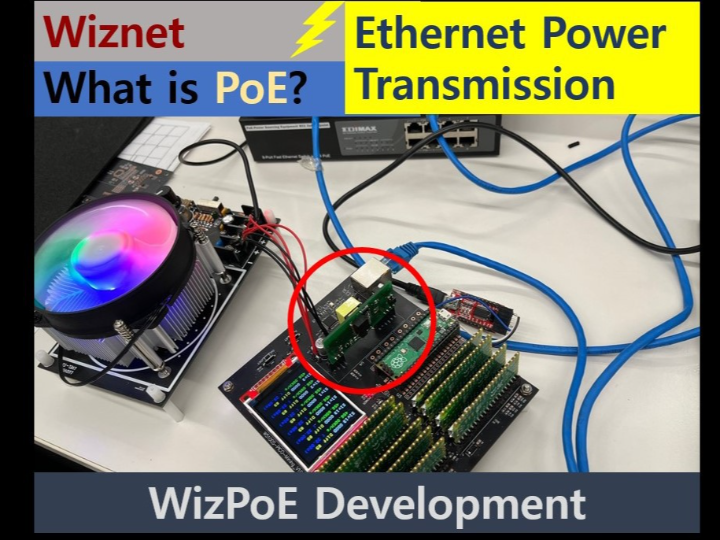
POE(Power Over Ethernet)
- It refers to power transmission technology itself, and its components are divided into PSE and PD.
- It is a technology that can transmit power and data to devices over Ethernet using Cat 5 twisted-pair cables.
- It can operate without having to change the Ethernet cable structure, saving time and money for cable configuration.
- It has remote power on/off, short circuit protection, over-voltage/low voltage protection, and over-current protection
The PoE international standard is divided into IEEE 802.3af/802.3at/802.3bt. As shown below, it is divided into four types depending on the amount of power, and you can select and use it according to the application you use.
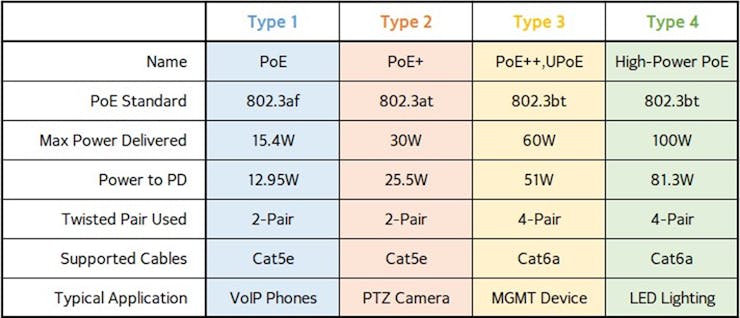
PSE(Power Sourcing Equipment)
- Power the Ethernet cable and manage the power.
It is divided into two types, Endspan and Midspan, depending on the power transmission method. There are usually many PSE devices that support only one, and there are few PSEs that support both, but the price is high.
Endspan PSE (Mode A)
- It is a method of delivering electricity through a data line. Power is transmitted to CT of PSE and received to CT of PD.
- As a disadvantage, the implementation is relatively complicated, and since power is supplied to the data line, it may be vulnerable to power noise.
- The advantage is that it can also be used at 1000 Mbit, and it can be combined with Mode B to satisfy higher power transmission specifications.
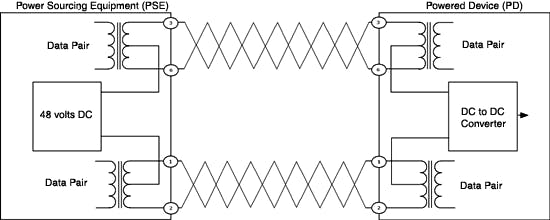
Midspan PSE (Mode B)
- Since only two pairs (1, 2/3, 6) are used for data transmission in the 802.3af standard, it is a method of transmitting power through wires 4, 5/7, 8 that are not used for data transmission.
- It is typically used on 10/100 Mbps equipment that supports only the 802.3af standard.
- Simple to implement, low cost.
- There is stability
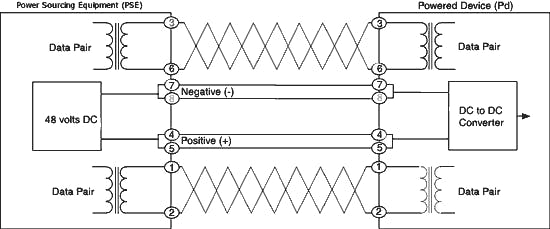
Endspan vs Midspan Since the lines used are different, cables are also divided.It is divided into T568A and T568B.
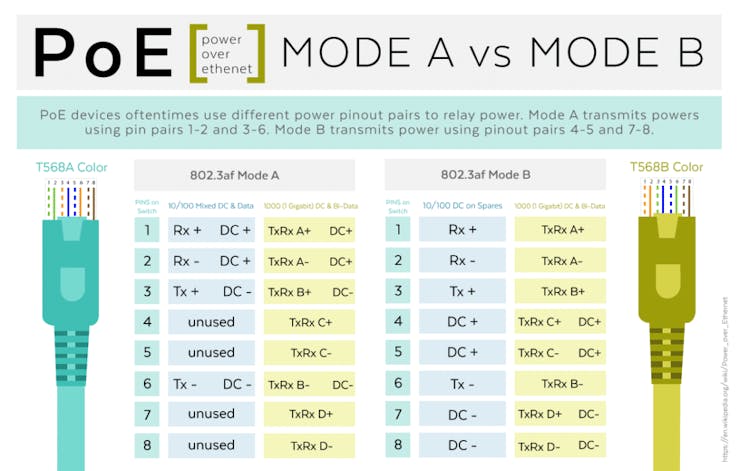
PD
It is a device that receives power and uses it. Examples include IP phones, IP cameras, and PDAs.
-------------------------------------------------------------------------------------------
It is now the beginning of full-fledged development.
The goal
The goal is to create a PD module that is compatible with both Mode A and Mode B. PD needs to receive about 48V from PSE and produce an output voltage of 5V. However, the PSE does not vaguely output 48V. PSE sends out the output through its own process.
PoE Process
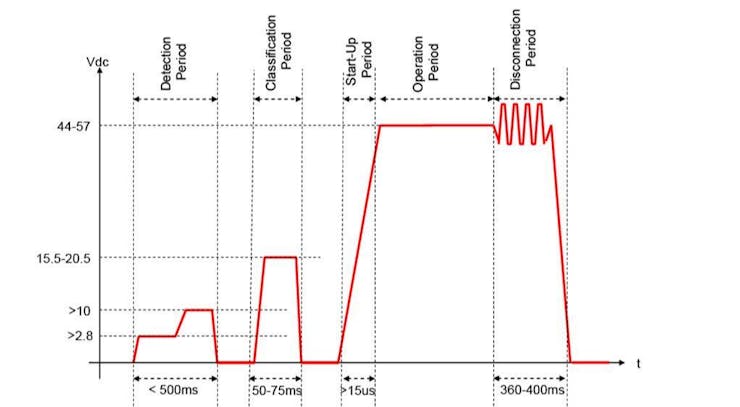
1. Detection Period
The PSE equipment outputs a very small voltage from the terminal until it detects that a PD supporting the IEEE 802.3af standard is connected to the end of the cable.

Continue to release 2.8V and 10V at 500ms intervals (until PD is detected). Then, the resistance value of PD is measured by calculating the current. When the resistance value falls within the category of about 25k, it moves on to the next step.
2. Classification Period
When a PD is detected, the PSE evaluates and classifies how much power the PD consumes.
3. Start-up Period
The voltage rises to 44-57 V in less than about 15 us.
4. Operation Period
It is a stable period of operation.
5. Disconnection Period
When the PD connection is disconnected, the PSE repeats "1. Detection Period" again.
------------------------------This is a real development----------------------------
Looking at the PoE process in this way, it seems that power will be output normally if only 1.2 is well accommodated.
The PSE device to be used for development is the EDIMAX 8Port device shown below. Only Mode B is supported.
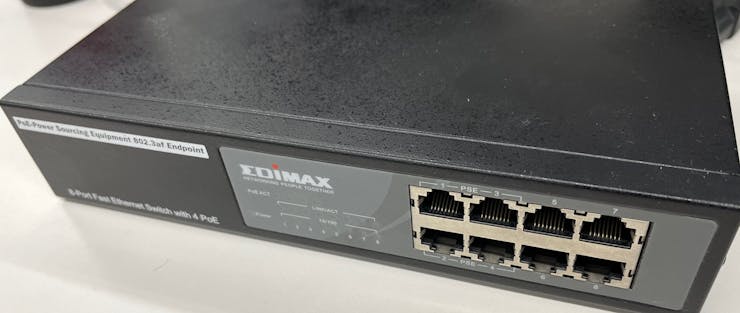

First, I put 24.9k resistance on the output terminal and took a voltage.
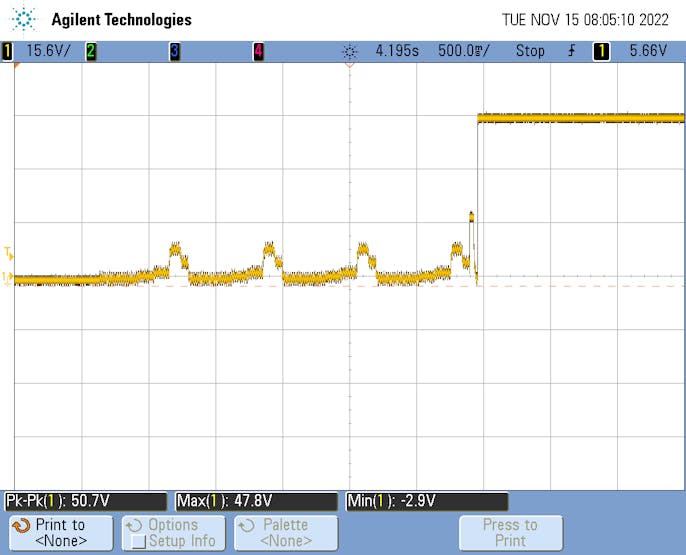
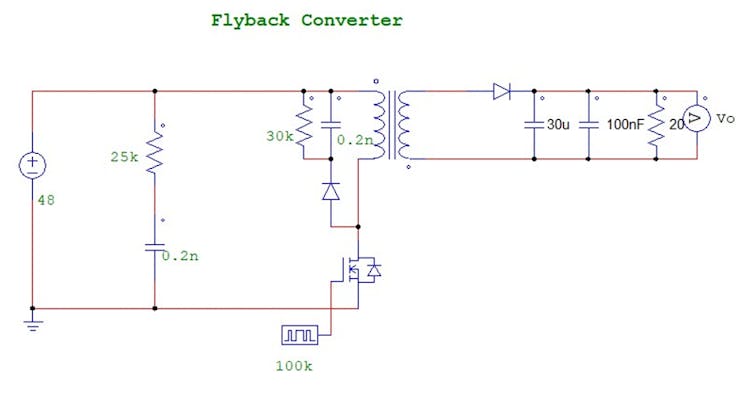
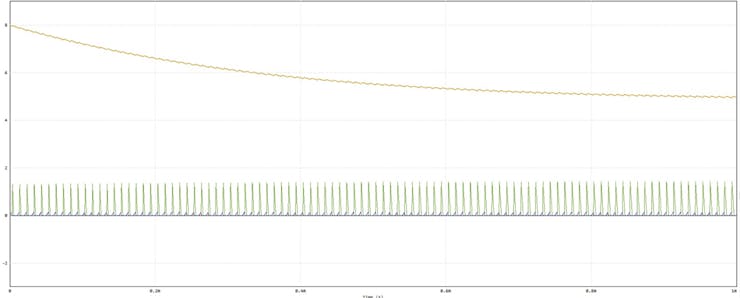
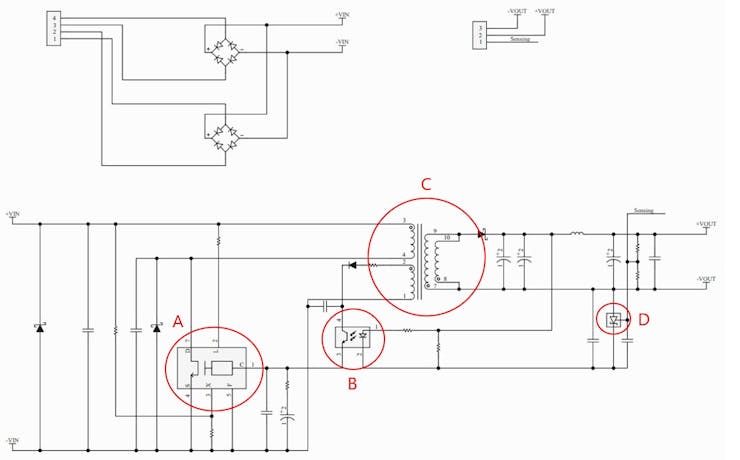
- A: There are many different chips and many applications for Flyback just by searching Google. I used the kindest one of them. It is an FET that receives a feedback signal and controls Duty.
- B: It's a popular Photocoupler. It must be installed for insolation, and the more precise the operation is desired, the faster the operation can be selected.
- C: One of the Transformers for PoE was selected. It was selected as 1:0.5:0.5:0.5, and the final test result seems to be good enough. But it's a bit pricey
- D : A diode that has its own reference voltage and is surrendered when the input reference exceeds that value.I can just use the Zener diode of the desired voltage, but this part is much more delicate and accurate than a regular Zener.
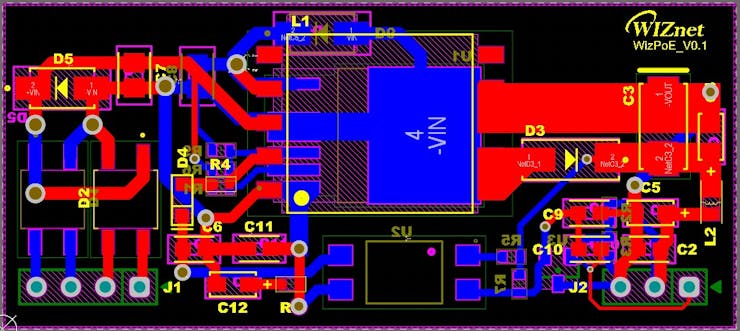
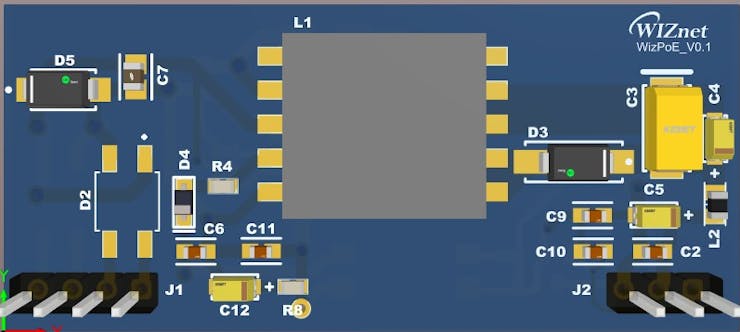
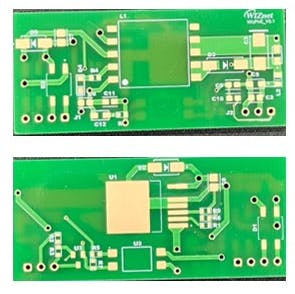
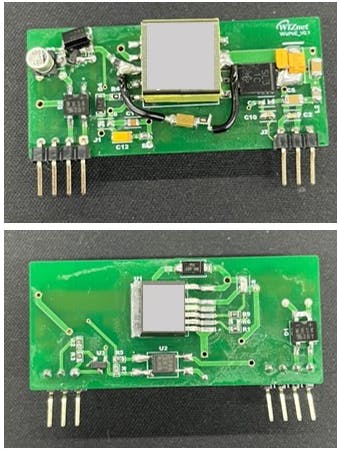
-----------------------------------------------------------------------------------------------------------------
Start a motion experiment
The problem arose from the outset. I thought that once only 48V was output, I could somehow adjust it and output 5V, but when I made the first operation after assembly, the output waveform was shown as follows.
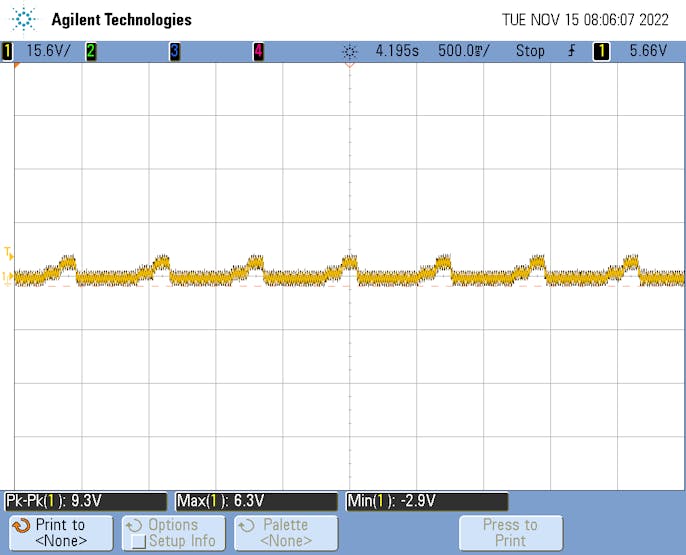
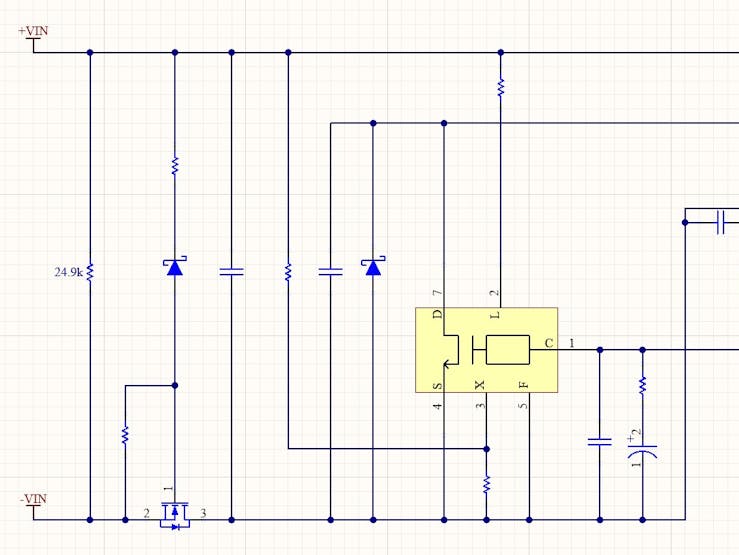
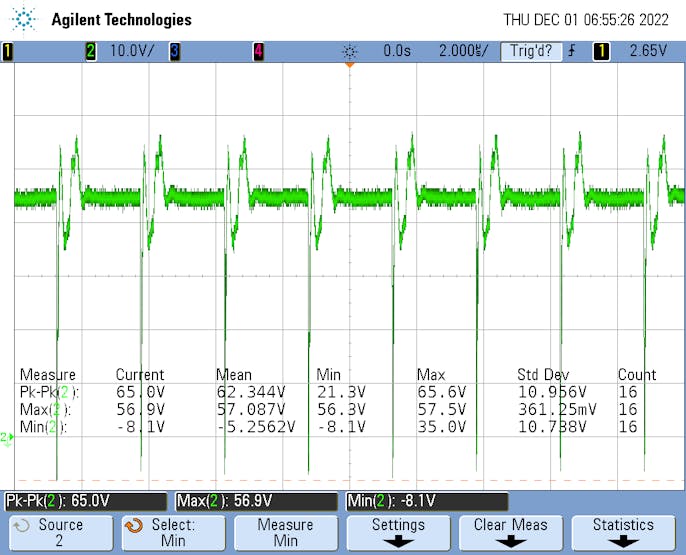
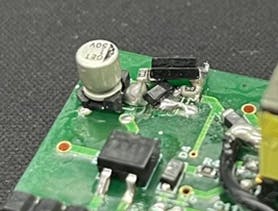
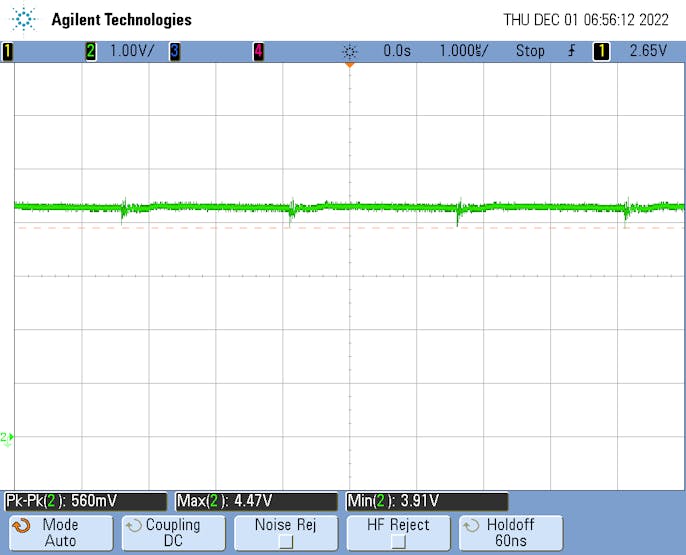
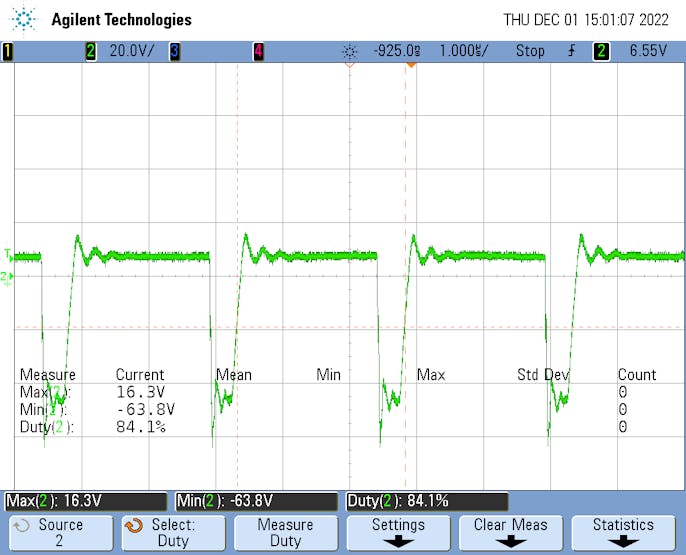

It turned out to be an Artwork miss for the Voltage Reference element. In the picture above, I designed it to the left, but it was on the right. Cathode and Reference were changed and installed, making strange movements.5V comes out well when installed normally.
-----------------------------------------------------------------------------------------------------------------
Now it's time for a test.
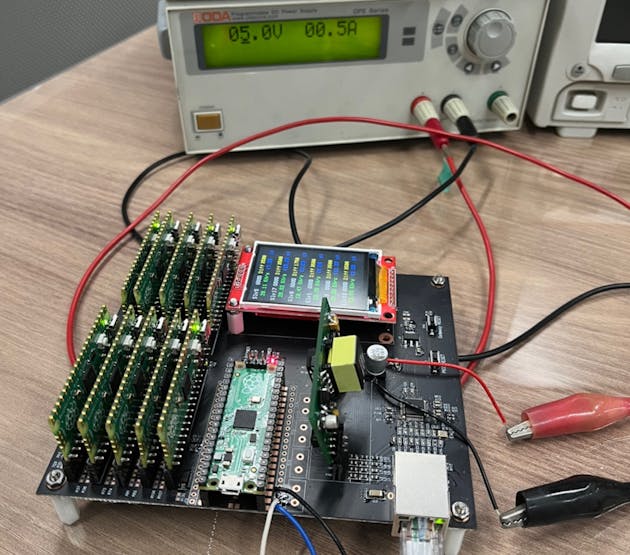
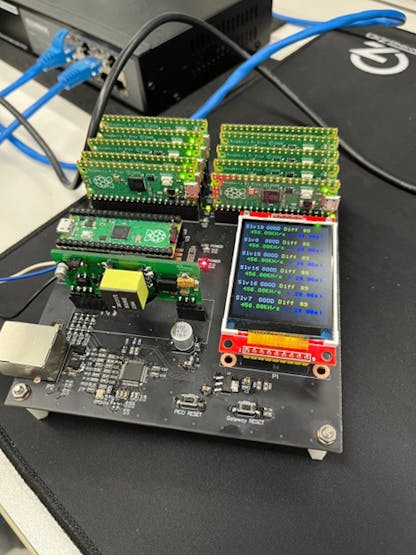
Still, I'm going to make a load jig after the test at this level and make an Aging.
ADD
8W <Mode A> Aging
Agging in 8W environment.
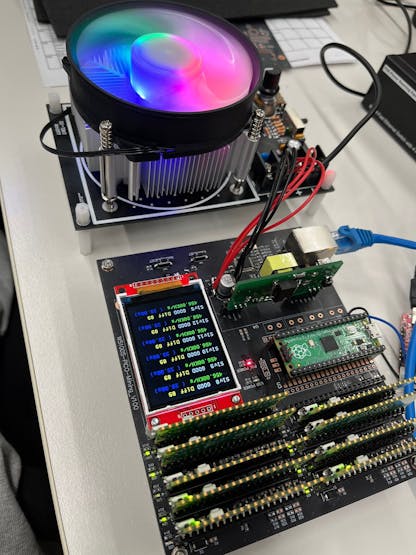
The board on which the module is installed is the W5100S-Mining board mentioned in the previous Log. This board consumes a total of 3W.
The board on which the module is installed is the W5100S-Mining board mentioned in the previous Log. This board consumes a total of 3W. And the board with LED Fan is DC Loader. I set it to consume 5W.
I'm consuming 8W in total.
<DC Loader: I bought a simple kit and I'm using it with great satisfaction. Recommend.>
https://smartstore.naver.com/electronic_kit
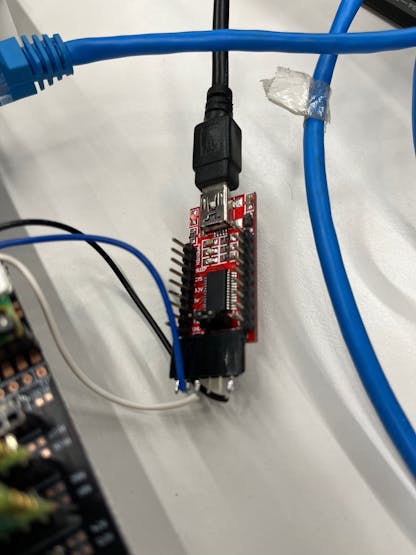
I checked the status with the USB to Serial module because there was a problem with the power supply and it could be down.
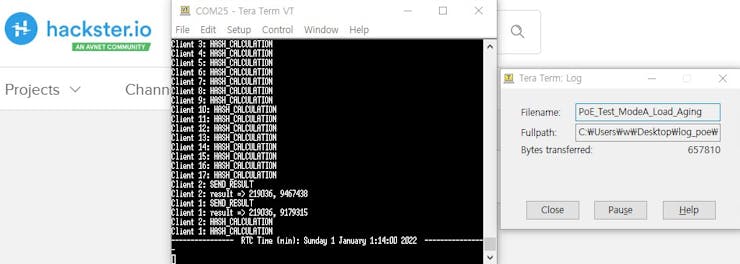
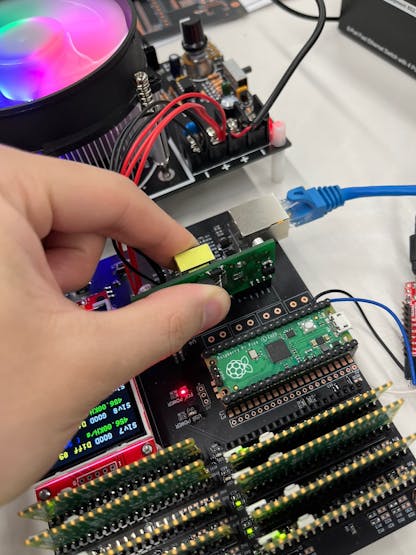
ADD
7W <Mode B> Aging
This time, I tried Aging in Mode B under the same experimental conditions as in the last log.
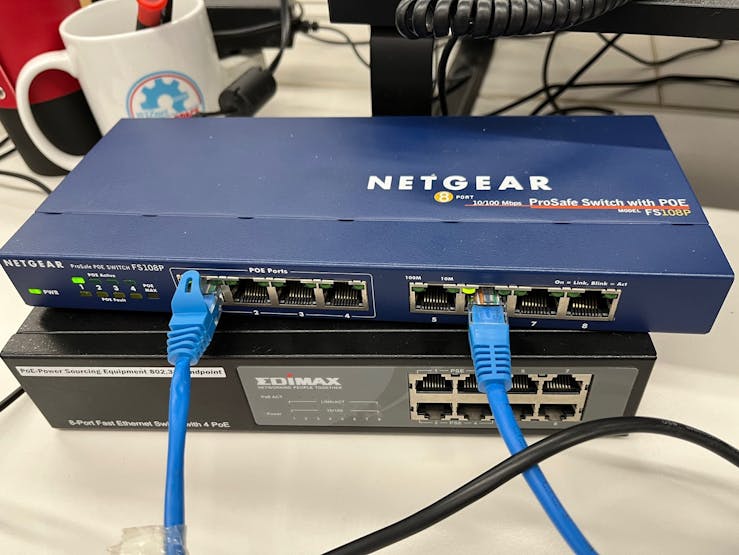
This switching hub supports only Mode B. And unfortunately, the maximum spec is 7W, so I tested up to 7W.
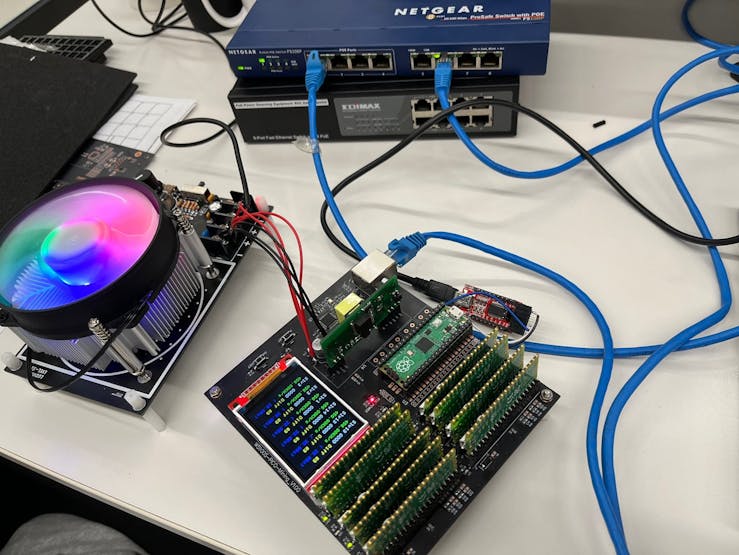
As a natural result, Mode B also has no problem.
It seems to work well up to 8W.
W5100S-PoE-Pico-EVB Development
Anyway, I'm going to make a better PoE module that can be attached to the Pico board and used Pico board.
Here's the circuit configuration.
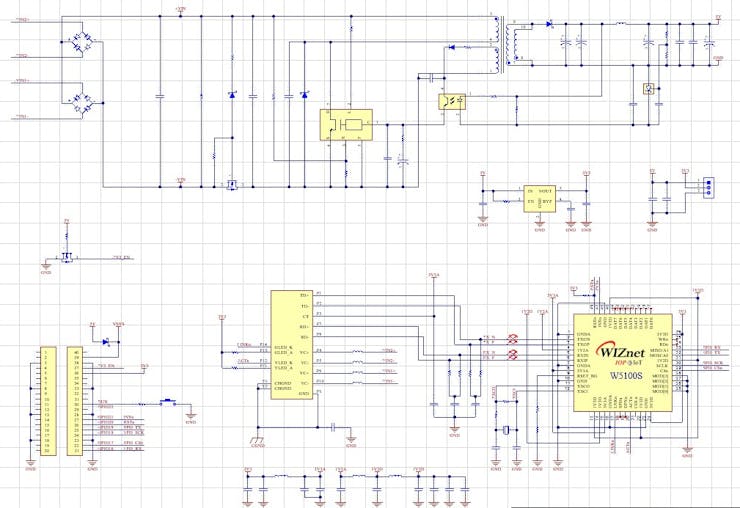
In fact, nothing much has changed.
I wanted to change the switching element, but I decided to change it after completely controlling it.
Many Capacitors have been added to the output terminal. Most of them are NCs, but they will be installed as needed.
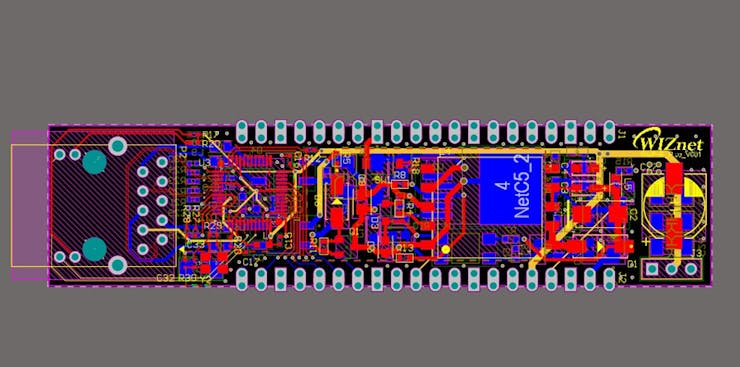
The artwork has been completed.
Wow, the space is really...It's really, really narrow. The picture doesn't look like it, but the actual board itself was very small, so it was very difficult to arrange the parts.
And it's isolated, so I have to distinguish GND, but I thought I had a cramp in my head because I was thinking about this part.
In the end, the artwork was completed somehow and placed an order.

When assembled, it will probably be completed in this way.
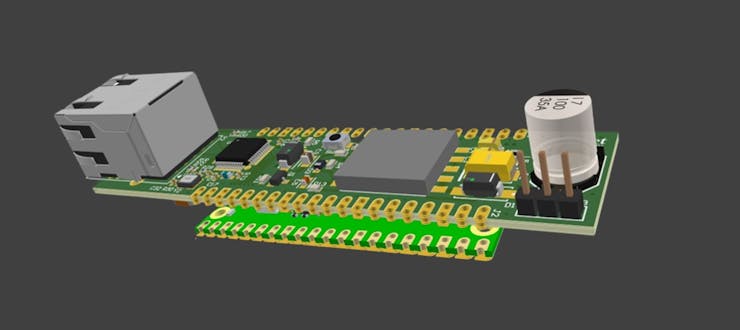
It will look like this if you attach it to the Pico board...? It feels awkward because the length is different.
Next, I will assemble the board and post it as a test result
